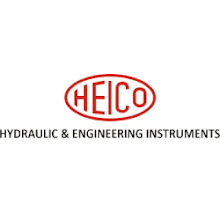Servo hydraulic actuators are advanced devices that combine the power of hydraulic systems with the precision of servo mechanisms. These actuators play a crucial role in numerous industrial applications, enabling precise control over force, speed, and position. In this blog, we will delve into the working principles of servo hydraulic actuators, exploring their components, operation, and applications, providing a comprehensive understanding of their capabilities.
Understanding Servo Hydraulic Actuators
Servo hydraulic actuators are devices designed to convert hydraulic energy into mechanical motion with the aid of servo control. They are commonly used in applications that require high force, precise control, and rapid response. These actuators consist of several key components, including a hydraulic power unit, hydraulic cylinder, control valve, feedback sensors, and a servo controller.
Working Principles
The working principle of servo hydraulic actuators involves the integration of hydraulic and servo systems. When an electrical signal is sent to the servo controller, it processes the command and generates the appropriate control signals. These signals are then converted into hydraulic pressure by the control valve, which directs the flow of hydraulic fluid to the hydraulic cylinder. The hydraulic fluid acts on the piston within the cylinder, generating the desired mechanical force and movement. The position, force, and velocity of the actuator are continuously monitored by feedback sensors, providing real-time data to the servo controller for precise control.
Applications
Servo hydraulic actuators find applications in a wide range of industries. In the aerospace and defence sector, they are utilised for flight simulators, control surface actuation, and aircraft landing gear systems. The automotive industry employs servo hydraulic actuators for durability testing, crash simulation, and vehicle suspension systems. Material testing machines rely on these actuators to conduct various tests such as ten
sile, compression, and fatigue testing. Heavy machinery, such as hydraulic presses and excavators, utilise servo hydraulic actuators for efficient operation and control. In robotics and automation, these actuators enable precise movement and manipulation of robotic arms and grippers.
Advantages and Future Developments
The advantages of servo hydraulic actuators lie in their ability to deliver high force, excellent control, and rapid response. They offer precise positioning, high stiffness, and can handle heavy loads. Moreover, advancements in technology have led to the development of more energy-efficient and intelligent servo hydraulic actuators. Future innovations may focus on integrating digital control systems, adaptive control algorithms, and enhanced energy-saving features.
Conclusion
Servo hydraulic actuators are sophisticated devices that combine the power of hydraulics with the precision of servo control. They find applications in industries ranging from aerospace to automotive, material testing to robotics. By understanding their working principles and components, we gain insight into the exceptional capabilities of servo hydraulic actuators. With continued advancements, these actuators will likely play a pivotal role in driving innovation and efficiency in various industrial sectors, ensuring precise control and enhanced productivity.




0 Comments